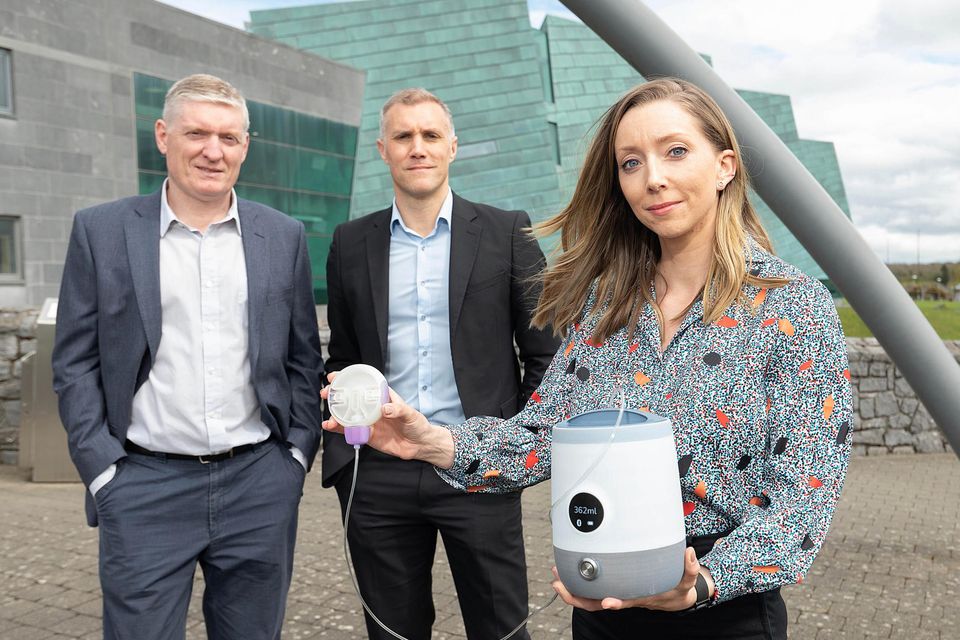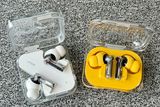Galway startup raises €1.9m for palliative care technology
SymPhysis Medical‘s new device treats fluid in teh chest, allowing late stage cancer patients to spend more time at home.
Colin Henehan, chairperson of HBAN’s MedTech Syndicate; co-founders of Symphysis Medical, Tim Jones and Dr Michelle Tierney
A Galway-based medical device startup, SymPhysis Medical, has raised €1.9m from three angel investors.
The NUI Galway spinout, co-founded by Tim Jones and Dr Michelle Tierney, specialises in palliative care. It is developing a solution to treat fluid in the chest, also known as malignant pleural effusion, in late-stage cancers.
The company says that this will result in the “ least invasive device of its kind on the market and will have the potential to reduce hospitalisations for these cancer patients”.
Business angels in three Halo Business Angel Network (HBAN) syndicates contributed €925K to the funding round, with DBIC Ventures, Enterprise Ireland and a separate “private investor” also contributing.
The company says that the funding will help SymPhysis Medical growits headcount, complete product development and target regulatory clearance in the US.
The company has lofty revenue targets, saying it’s on a path to €49m in turnover by 2025.
The drainage device being developed by the startup claims to be less invasive to place than rivals and can be removed after a month. It can, the company says, be managed by patients themselves without the assistance of a nurse, minimising hospital visits at a time when patients wish to be at home. SymPhysis Medical has filed two patent applications relating to the device.
“This funding will help us to deliver better quality of life to late-stage cancer patients and we will use it to support our international expansion, ensuring we reach as many patients as possible,” said Tim Jones, the company’s CEO and co-founder.
“Palliative care is concerned with quality of life from the point of diagnosis of a life-limiting condition to the time of death. It focuses on managing distressing symptoms, such as pain and discomfort, and should also support a patient’s mental and social well-being. The device will not only make patients more comfortable, but it can also give them the freedom to spend time with their loved ones and remain active and mobile, without being tied to their hospital or carers.”
Join the Irish Independent WhatsApp channel
Stay up to date with all the latest news















